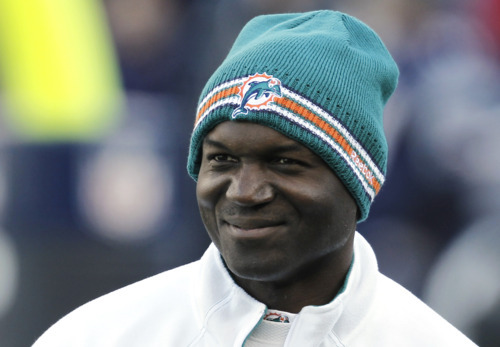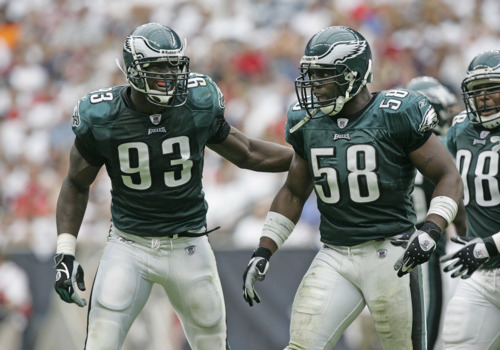
It pains me to see that people are still arguing that Juan Castillo deserves to return as defensive coordinator in 2012. I don’t hold out hope of convincing these misguided souls, but I do want to rebuke one point that keeps coming up: the myth of a single year of experience.
I’ve already spoken at length about how the final few games were a mirage, and both Jeffrey Lurie and Andy Reid have asserted as much (“fool’s gold”). But even if you grant an improvement, and attribute it to Castillo, that doesn’t mean he’s suddenly qualified to hold the job.
Not to bog you down with two days’ worth of analogies, but let’s put this into a non-football context. Let’s say the president is trying to find a new secretary of defense. It’s not the biggest job in the land, but command over our nation’s military is one of the highest-ranking appointed posts.
To fill this void at the Department of Defense, the president taps the undersecretary of the Department of Health and Human Services. This particular fellow has no experience running the military, CIA, or any other major branch of government. He has lots of experience administrating his small department, but aside from some consulting on veteran affairs and a brief stint in the Army nearly 30 years prior, he’s woefully unprepared for the job.
The appointment, widely criticized at the time, goes pretty much as poorly as everyone expected. The strategies he employs bungle major operations, the missions he supports are disasters, and the only success the military has comes from experienced generals who are given independent authority to run their operation. Meanwhile, the secretary’s record is the biggest reason the president is now looking unlikely to be re-elected.
So, after a year of this, we’re wondering whether he should be replaced, and the question becomes: how much improvement do we expect from the secretary in year two of his job? Some folks argue that after a year at the helm, the secretary is actually better than most candidates out there. He made lots of mistakes, but surely now he’ll know what not to do.
I say this is ridiculous, for one reason among many: next year won’t be a rebooted, replayed version of last year’s events. In an ideal world, the secretary now knows how to deal with a certain subset of problems he faced in his first year. But next year not only could bring different challenges, it certainly will. The enemy doesn’t stand still, and the secretary and his team will have to come up with new strategies to face new problems.
Even a veteran of these tough military decisions won’t get the answers right every time. But at least with a decade or two of experience, he or she would be able to call upon knowledge gained on the battlefield or at the elbow of a few respected superiors. The secretary, with his one year on the job, isn’t anywhere close to having that kind of knowledge, so the improvement from year one to year two will be minimal.
Whether it’s secretary of defense or defensive coordinator, we’re not talking about an entry level job where you come in at a deficit of knowledge and quickly “level up” to the point where you can accomplish everything. This is a job that people spend decades preparing for and it’s still incredibly difficult. One bad year at the helm doesn’t vault you ahead.
Photo from Getty.



 At right are the defensive ends selected in Tennessee in the 12 years Washburn was coaching there. He must have had tremendous input into which players were taken. In theory, these are players that are prototypical for what Washburn wants to do at the position.
At right are the defensive ends selected in Tennessee in the 12 years Washburn was coaching there. He must have had tremendous input into which players were taken. In theory, these are players that are prototypical for what Washburn wants to do at the position.